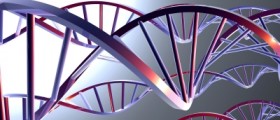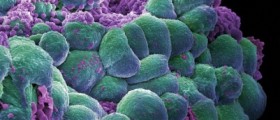
In general, estrogen is a hormone which is predominantly found in females, maintaining their biological characteristics. However, males contain this hormone too, and its levels are involved in sexual reproduction.
Female estrogen is produced in the ovaries while male one is made by the adrenal glands located above the kidneys. Also, some other organs may be in charge of estrogen production in humans.
What are Estrogen Receptors?
Estrogen affects the cells in our bodies by getting connected to specific parts of these cells called estrogen receptors. These receptors are, basically, protein molecules involved in numerous functions estrogen performs. Only estrogen hormone can connect to estrogen receptors.
When tissues are connected to estrogen function, they all have estrogen receptors on their cells. Therefore, only some parts of our body have these qualities. So, estrogen travels around our body, searching for cells which have estrogen receptors. Once these are found, the hormone performs its normal functions.
As far as the location of estrogen receptors is concerned, these are found inside the cell’s core, where the DNA molecules are present too. When estrogen molecules are not connected to the receptors, these are idle and have no impact on the surrounding DNA, which encompasses all the genes present in the cell. However, when an estrogen molecule binds with the estrogen receptor, the receptor changes, along with the DNA, activating the genes it contains.
Estrogen and Cancer – the Connection
Even though estrogen is a very useful hormone in the human body, it can also cause severe health complications.
While the positive aspects of estrogen are balancing and adjusting the sexual function of females through breast and uterus programming, limiting cholesterol production, and making the bones in our body strong, estrogen may also be an initiator of cancer in certain cases.
Namely, estrogen is capable of causing the cells in the body to live longer than they should, thereby leading to cell buildup and formation of tumors. Thus, estrogen is known to be behind breast and uterine cancer in women.
When affecting the breasts, estrogen increases the life span of cells in the milk glands during menstruation. However, if pregnancy does not take place, the levels of this hormone drop significantly, leading to deterioration and death of these cells and an onset of new cells, serving the same purpose. This process repeats itself during every single menstrual cycle, until a women reaches menopause.
However, when DNA mutations, triggered by damage in the genes related to cell growth and division take place, the process leads to lack of control over cell proliferation, triggering cancer.

















Your thoughts on this
Loading...